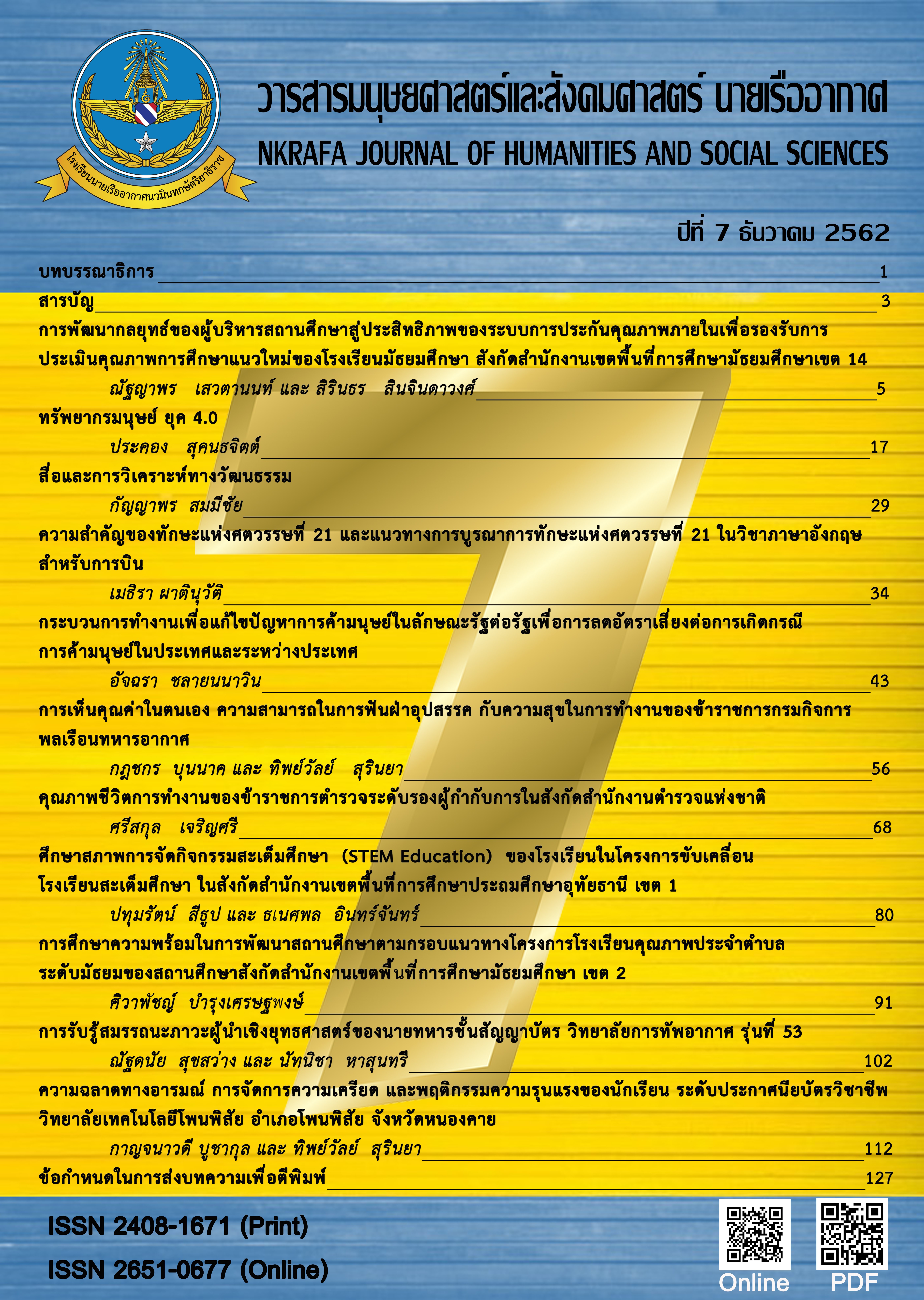Media and Cultural Analysis The hidden message of social conditions via the art of media production
Main Article Content
Abstract
This paper is based on dissecting functions of media; to explore the scope on how media representation corresponds with the society. Media learners are replaced with audiences as they both share the experience of consuming information. The meaning that media conveys is consistently inserted by chosen textual analysis to make the paper more objective, and to provide reader broader perspectives of its embodiment. Qualitative research method is applied as a tool to dig into respective findings. The subjects are stressed on culture, ideology, and identity that media fundamentally performs as a linkage. Films are utilized as underlying medium to mirror historical and current situations which contain buried message of social conditions. The advantages of studying media is to help audiences understand themselves and fathom different social dimensions.
Article Details
บทความที่ได้รับการตีพิมพ์เป็นลิขสิทธิ์ของวารสารมนุษยศาสตร์และสังคมศาสตร์ นายเรืออากาศ
ข้อความที่ปรากฎในบทความแต่ละเรื่องในวารสารวิชาการเล่มนี้ เป็นความคิดเห็นส่วนตัวของผู้เขียนแต่ละท่าน ไม่เกี่ยวข้องกับโรงเรียนนายเรืออากาศฯ และคณาจารย์ท่านอื่น ๆในโรงเรียนนายเรืออากาศฯ แต่อย่างใด ความรับผิดชอบขององค์ประกอบทั้งหมดของบทความแต่ละเรื่องเป็นของผู้เขียนแต่ละท่าน หากมีความผิดพลาดใด ๆ ผู้เขียนแต่ละท่านจะรับผิดชอบบทความของตนเองแต่เพียงผู้เดียว
References
Jean-Francois Lyotard, The Postmodern Condition: A Report on Knowledge, Media, and Technology, University of Minnesota Press, 1984.
Kim Schroder et al, Researching Audiences, London, 2003.
David Buckingham, Youth, Identity, and Digital Media, Cambridge, 2008.
Kanyaporn Sommeechai, A movie poster from “The Dark Knight”, 2013.
Reporters. (2015) “Luang Phor Khoon Passes Away” [online]. Available: http://www.bangkokpost.com/news/general/563319/luang-phor-khoon-dies-at-92. [Accessed : May. 31, 2015].
Sumitr Suwan. (2013)“Quanlitative Research and Qualitative Research” [online]. Available: http://www.rtafa.ac.th/components/com_booklibrary/ebooks/RTAFA_JoHSS_issue_1.pdf. [Accessed: May. 27, 2015].
Criticalmediaproject. (2015). “Social construction, ideology, and identity” [online]. Available: http://www.criticalmediaproject.org/site_media/media/uploads/who_are_you_overview.pdf. [Accessed: May. 29, 2015].
Classism. (2004). “What is Classism” [online]. Available: http://www.classism.org/about-class/what-is-classism/. [Accessed: May. 31, 2015].
Daniel Thomas Cook and J. Michael Ryan, The Wiley Blackwell Encyclopedia of Consumption and Consumer Studies, Wiley-Blackwell, 2015.
George Lipsitz. How Racism Takes Place, Temple University Press, 2011.
Phiroj. (2007). “Racism in Thailand” [online]. Available: http://www.oknation.net/blog/phiroj/2007/07/09/entry-1. [Accessed: May. 31, 2015].
A feminist 101. (2008) “What is Sexism” [online]. Available: : https://finallyfeminism101.wordpress.com/2007/10/19/sexism-definition/. [Accessed: Jun. 01, 2015].
Laura Mulvey, Visual and other pleasures, London, 1989.
Kanyaporn Sommeechai, Reading film: Vertigo, 2013.
Kanyaporn Sommeechai, Repression Unveiled: The state of Thai society's representation through Thai horror films, 2013.


